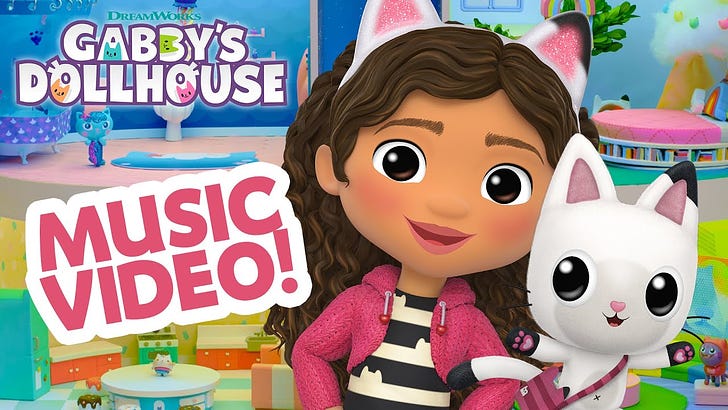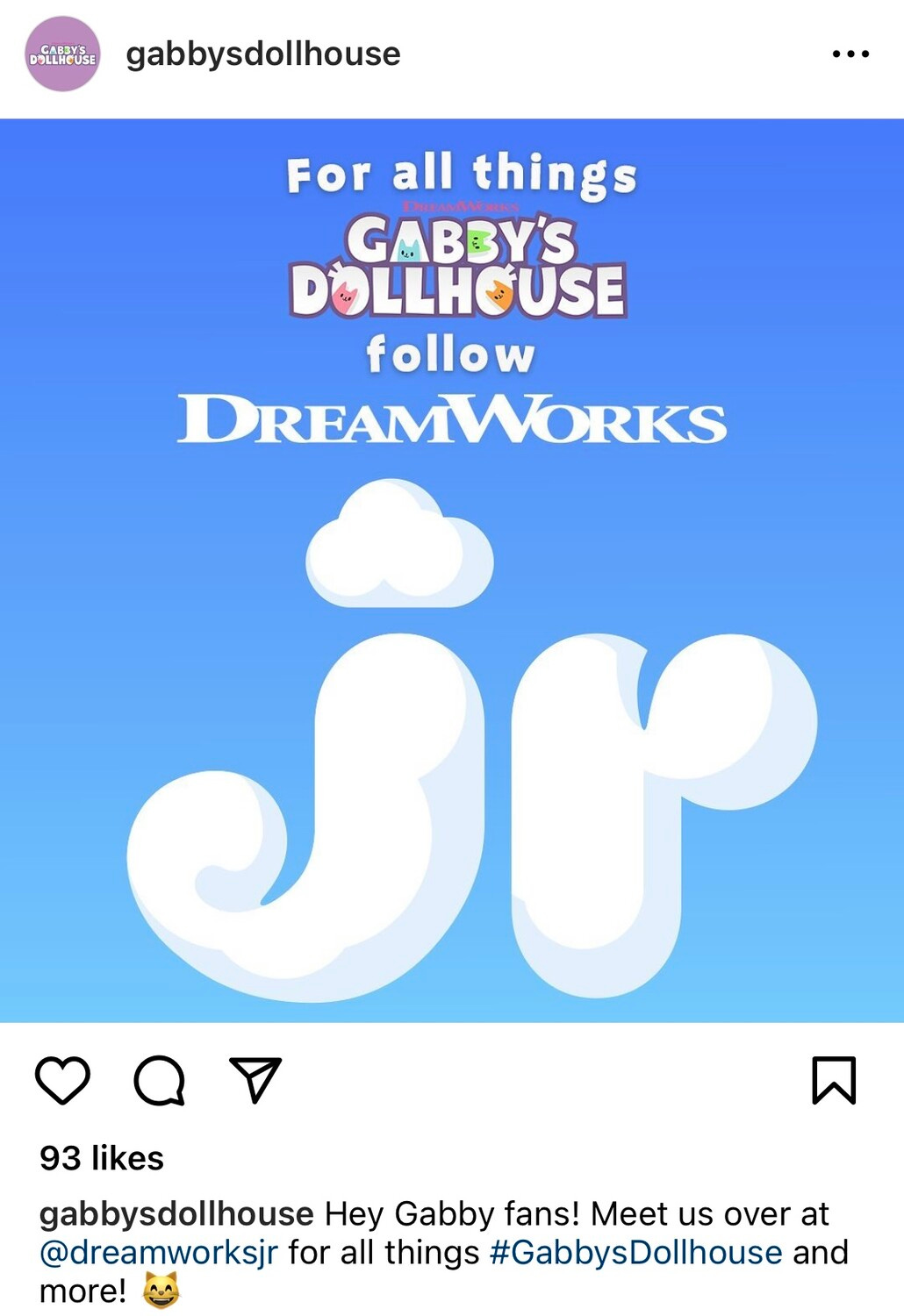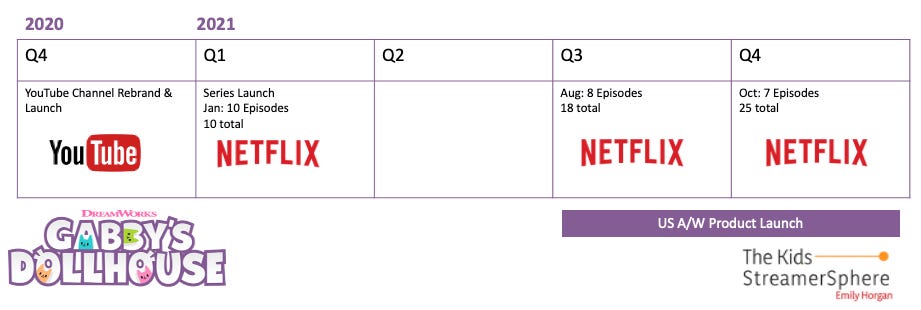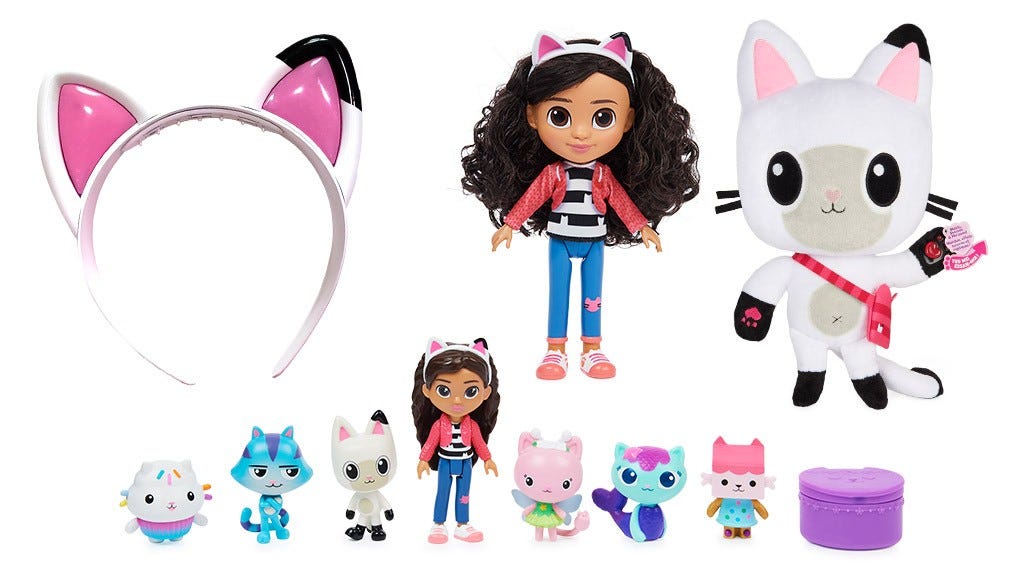Ten Things About the Gabby’s Dollhouse Franchise Strategy That Just Make Sense—Part 1
This time last year, I mused on behalf of What’s on Netflix about whether Gabby’s Dollhouse could be DreamWorks’ next big kids franchise. Key performance indicators, specifically in the US, were throwing strong signs that the show was gaining crucial momentum.
Fast forward 12 months and Gabby has undeniably claimed its place alongside Bluey and CoComelon as one of the top kids IPs on everyone’s lips. The most notable thing about Gabby, though, is that it’s a true streaming-led franchise—originating on a streaming platform, holding no pre-established affinity among today’s audiences.
This is difficult to achieve. As Margie Cohn, president of DreamWorks Animation, told The Hollywood Reporter:
“Series like Gabby’s Dollhouse are few and far between, especially in this highly competitive and crowded television landscape… The most popular properties today are still the ones that broke out five or even 10 or more years ago.”
One thing people somtimes forget, however, is that DreamWorks have a track record in this area. Spirit Riding Free is arguably the only other IP to hit franchise-level success out of streaming.
I’ve been tracking Gabby closely since she launched. Here are a few strategies I’ve seen that will have undoubtedly contributed to her success. This is the first of a two-part download—the franchise really has so much going on, it was necessary!
1. Pre-gaming a YouTube presence
Although Gabby’s Dollhouse launched on Netflix in January 2021, the show had actually been active on YouTube from the previous year. Smartly, it had taken over and rebranded a presence originally built by DreamWorks’ Rhyme Time Town. This meant that precious YouTube algo juice wasn’t at a standing start and Gabby could build on an already established preschool audience. Nice for her!
YouTube is a fundamentally central facet of building a kids brand today. If my back was against the wall, I’d say (with a wince) that it’s more important than free-to-air from a distribution point of view. One of the key questions for IP owners is where do you start with a YouTube presence? There’s the option to go with those belonging to your partner platforms. The Netflix Jr. YouTube channel, for example, comes with nearly 14 million subscribers. That level of guaranteed viewership is a definite plus, but if it’s your only approach, it also completely gives away control of your destiny.
So if you’re launching a brand on YouTube, where do you start? If you own the rights to multiple IPs, there can be potential in building a “hub” channel: a presence servicing multiple brands, which builds an audience agnostic of a specific show. There are many kids producers who do this, including two main YouTube operators, WildBrain and Little Dot Studios.
Without that luxury, what are your options? If you want to jump-start success, you can market your way there through YouTube ad spend on Search and TrueView (pre-roll ads). How much the algorithm deserts you once you stop feeding it money is another question.
A less obvious approach is purchasing a channel second-hand. This follows a similar vein to Gabby in that it involves a rebrand of a pre-existing asset, in the hope of pulling in and converting that audience. Cost here will be scalable in line with how big a channel you want to buy, assuming the right one in terms of size and audience is on the market.
2. Focusing on the kids, not the parents
One thing you’ll notice about Gabby’s Dollhouse is that investment to build owned adult-facing social media channels hasn’t been prioritized. There must have been consideration given to this, since Instagram, Facebook and Twitter handles were set up in 2018. Pages have a nominal following, likely all organic, and now throw to DreamWorks Jr.’s social presence. This is more established, although still relatively modest, with 80k likes on Facebook and 21k followers on Instagram.
Social media can feel like a really important marketing tool, given all of us (old people) are on it constantly (proof = you’re on it right now!). Its application in marketing to young kids and preschoolers should be finely tuned, though. They’re not on there, they shouldn’t be, so if you want to get them to watch your show, think twice before overinvesting in this type of marketing. Parents are on there, which is helpful in some ways, particularly when promoting toys and other merchandise.
And this is where you can see the Gabby’s Dollhouse social media footprint. There are plenty of sponsored influencer posts linking product and local retailers. There’s also cake. Lots and lots of cake, which is the slam dunk grammable opportunity for this property.
3. Rolling out episodes on Netflix just so
First window episode roll-out for a preschool franchise is a tricky tango, a challenging cha-cha, a bruising boogaloo. (Too far? Never.) On one side, you’re weighing up episode delivery and dubbing, which, no matter what, are always running late. On the other, you’re trying to ensure the audience are getting enough episodes to drive stickiness at launch, whilst still holding content to keep you going throughout the year. Add to this an overlay of consumer product expectations, with licensees gagging for FTA holdbacks to pass, and jittery about multi-million-dollar minimum guarantees, and the balance you need to tread is knife edge.
All this assumes you have any sort of say and can dictate content programming to support your brand. As far as I know, dictating content launch dates to Netflix (or platforms in general) isn’t exactly A THING, but if anyone could have a chance at influence, you’d think it would be DreamWorks.
For Gabby’s Dollhouse, Netflix episode roll-out landed just so:
I’m not saying there wasn’t a Hail Mary moment in the eight months between season 1 in January and season 2 in August. Sensible prayers would have taken the form of content marketing initiatives to keep new viewers finding the series. By Christmas 2021 there was a decent volume of episodes, plus some nice content momentum to support a successful US toy launch. Don’t take my word for it, though, ask Nielsen Streaming Content Ratings. Gabby’s Dollhouse would finish up 2021 as the top streaming Original for kids 2 – 11. It beat out other DreamWorks series based on established IP like Jurassic World: Camp Cretaceous and The Boss Baby: Back in Business. It even trumped Bluey and PJ Masks, this all despite only having 10 episodes of content available for most of the year.
4. Targeting US product launch a season after content launch
Timing-wise, what the year one roll-out of Gabby’s Dollhouse content managed to do was deliver the perfect run-up to Spin Master’s US toy line launch for autumn/winter 2021. The show had time to bed in with viewers, buoyed by its in-depth YouTube presence, and the aforementioned presumed content marketing.
New episodes for back to school and again ahead of holidays gave lots to shout about content-wise in the key gifting season. US product and retail marketing would have flighted alongside this, amplifying noise. The episode drops would also ensure the series was “above the fold” on the Netflix homepage over this period. That “New Release” content rail on Netflix’s viewing platform is probably the only place you can be assured your show will land.
5. Toyetic consumer product hooks to die for
The clue is in the name, Gabby’s Dollhouse. The themes in this show are so consumer product native, it hurts. Beyond the dollhouse, it’s the cats! Cute and eye-catching in either plush or play set. A cat ear hair band as an accessory writes itself, and also provides a low entry price point for even a casual viewer to have their own physical piece of the show. Add to this the crafting and baking and you have multiple angles for authentic, exciting consumer product themes across multiple categories. Honestly, the creative product hooks in this show deserve a Just Make Sense list of their own *notes down for future issue*.
So that’s five things, and we’re only at year one in the franchise’s life cycle. The second half of this article will look at how Gabby’s Dollhouse set up for global domination, as well as what’s coming down the line with the season 7 launch.
While smart commentators in the entertainment industry are struggling to think of a new entertainment franchise that’s gathering momentum, we’re just over here in the kids space celebrating one which is doing just that, and it's streaming originated to boot!







